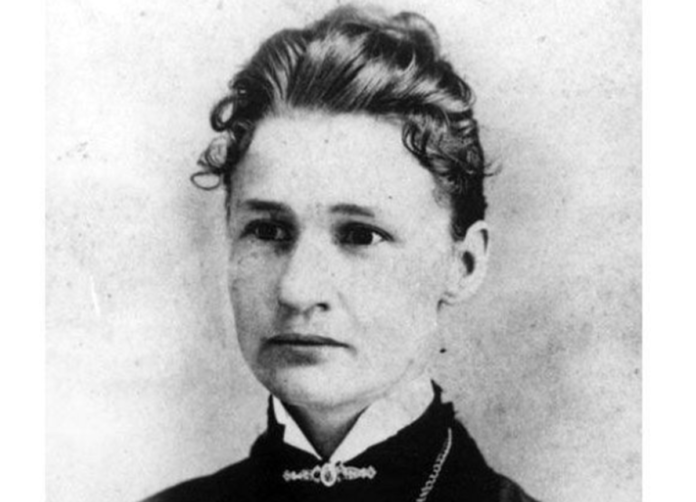Women began to acquire strength in Kansas politics long ago, when Susanna Salter was elected in 1887 in Argonia, the first woman to be mayor of any city in America. She served for a year, her only venture into elective politics in the 101 years that she lived.
Mrs. Salter presided with a firm hand. She applied a secure knowledge of local ordinances on the street and rules of order at town meetings. Nonetheless, her election revealed something cockeyed, that women could win public office in Kansas, but they couldn’t vote for president of the United States.
Susanna’s celebrity in the suffrage movement was banked among the state’s progressive inclinations. Kansas had granted homestead rights to women with the Wyandotte constitutional convention in 1859. Women could vote and hold office in any city in the state; full suffrage for women was ordered by the state Constitution in 1912, eight years before Congress ratified the 19th Amendment to the U.S. Constitution, allowing women the right to vote. (In 1973, Kansas became the sixth state to ratify the Equal Rights Amendment.)
Kansas had been far ahead of the times. Anna Junken, from 1884 to 1888 the Dickinson County Register of Deeds – a powerful office at the time – was one of the earliest women to hold county office in Kansas.
The year of Susanna’s election, voters in Syracuse elected women to all five seats of the city council, but a man was mayor; Baldwin had an all-women city government and two years later, in 1889, Lucy Sullivan was elected mayor and a full slate of women were reelected to the council.
Oskaloosa likely holds the record for women in government. In 1888 Mary Lowman was elected mayor and five women were elected to the city council; a year later, Mrs. Lowman and three council members were reelected. The two women who did not run for reelection were replaced by women.
In 1889, the entire city administration of Rossville, 18 miles west of Topeka, was composed of women from the mayor, Mrs. H. H. Miller, through the complete roll of city officials including the police judge and city treasurer.
In 1911, when the Legislature submitted the suffrage amendment for public vote in 1912, almost half the county school superintendents in Kansas were women.
*
Over time, women gained power in public office, and some of them used it to advocate sound public policy in education, social welfare, the judiciary and other systems. Recently among them:
– Martha Keys, a Manhattan Democrat elected to two terms in the U.S. House from the state’s 2nd district (1975-79), succeeding Rep. Bill Roy who ran for the Senate and lost to incumbent Bob Dole. Ms. Keys then served as a special adviser to the Secretary of Health, Education, and Welfare in 1979-’80 and as an Assistant Secretary of Education in 1980 to January 1981. Afterwards, she worked as a consultant and as director of the Center for a New Democracy.
– Sandra McMullen, of Hutchinson, a Kansas delegate to the 1976 Democratic National Convention, and among few to serve successive four-year terms (1981-’89) as a chairman of the Kansas Board of Regents.
– Deanell Reece Tacha, a native of Scandia, now a retired United States federal judge (1985-2011) and Dean of the Pepperdine University School of Law (2011-2016). Tacha served on the U.S. 10th Circuit Court of Appeals, then became Dean at Pepperdine. She had taught at the University of Kansas School of Law, is a former assistant to the U.S. Secretary of Labor, a former director of the Douglas County Legal Aid Clinic, and White House Fellow. While serving the 10th Circuit Court, she was Chief Judge of the Circuit from 2001-08.
– Gloria Timmer was state budget director for two governors, Joan Finney and Bill Graves, and expert at explaining budget mysteries with refreshing clarity. Timmer moved to Washington, D.C. in 1998 to head the National Association of State Budget Officers.
*
In 1986 the Argonia and Western Sumner County Historical Society campaigned for a commemorative postage stamp to honor Susanna Salter as first woman mayor in the United States. Ruth Harper, society president, sent letters and information packets to editors, school districts and local, state and federal officials asking them to join the cry: “Let’s have a stamp for Susanna!”
The campaign was thorough, exhaustive. The Citizens Stamp Advisory Committee of the U.S. Postal Service was not convinced.
Advocates had hoped the stamp would celebrate a century since Mrs. Salter’s election, an event that declared public office no longer a male-only preserve.
***





